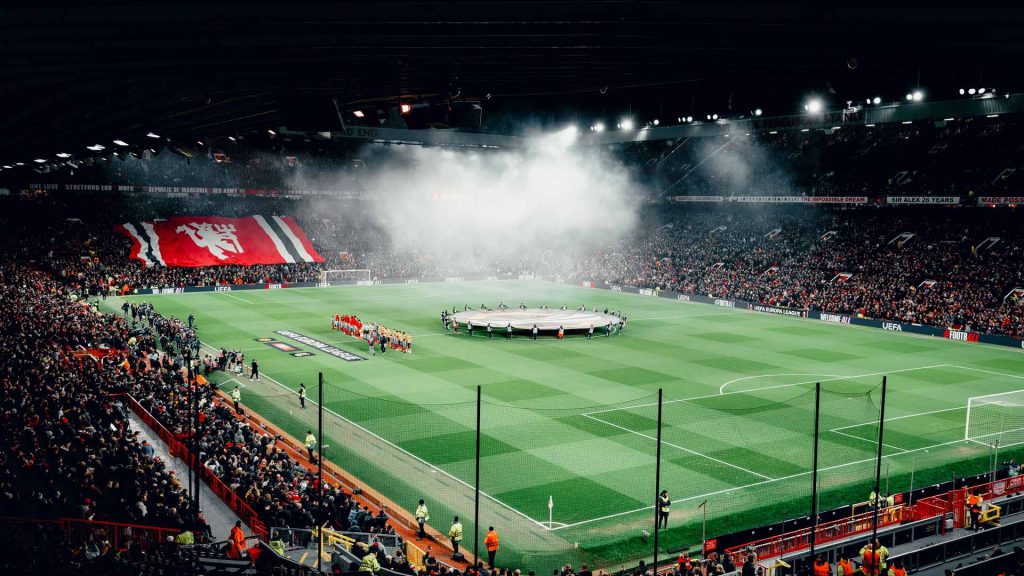
Old Trafford
Old Trafford stands as a symbol of football history, resilience, and passion. It is not just a stadium; it is an emblem woven into the fabric of Manchester United’s identity and the broader world of football. Known affectionately as the “Theatre of Dreams,” Old Trafford is a fortress where historic victories, legendary players, and unforgettable moments have been etched through time. As a pilgrimage site for football fans, Old Trafford encapsulates everything that makes Manchester United one of the most revered clubs globally. From its majestic stands to its rich history, the ground offers more than just a game; it offers a journey into football culture itself.
The History and Evolution of Old Trafford
Understanding Old Trafford’s history requires appreciating its enduring significance through different eras of football. From its humble beginnings to becoming the iconic stadium it is today, Old Trafford has seen countless transformations that mirror the growth of the sport and the club itself. This stadium has not only witnessed the evolution of tactics, technology, and footballing brilliance but has also been a silent witness to societal changes, economic shifts, and emotional stories that define Manchester United 8xbet.
For over a century, Old Trafford has been a safe haven for generations of football fans, a place where community, entertainment, and ambition converge. Whether it’s the early days with modest accommodations or the modern marvel of extensive renovations, the stadium’s journey demonstrates resilience and a relentless desire to maintain its legendary status. Exploring its history reveals how deeply intertwined football is with local identity and global passion.
Origins and Early Years
Old Trafford’s story begins in the early 20th century, with its inception in 1910 to accommodate the growing appetite for football in Manchester. Originally built as a rugby ground, the site was repurposed for football, quickly becoming a home for Newton Heath, which would later evolve into Manchester United. The journey wasn’t without challenges; the stadium faced fires, wars, and financial struggles, yet its spirit endured.
During its early years, Old Trafford was characterized by a modest capacity and simple stands, reflecting the modest ambitions of early football clubs. Over time, improvements and expansions transformed it into a formidable venue, capable of holding tens of thousands of passionate fans. The stadium became a hub of local pride, representing the hopes and dreams of a working-class community facing the post-war hardships. It was a place where legends were born, and glorious victories etched their place in history.
Major Expansions and Modernization
The mid-20th century marked a period of significant development for Old Trafford. Throughout the 1950s and 1960s, technological advancements enabled the stadium to expand its capacity, offering more fans the chance to witness Manchester United’s exploits firsthand. The construction of new stands, improved facilities, and modernization efforts aimed to keep pace with the growing popularity of football.
In the contemporary era, Old Trafford has undergone a series of renovations to meet the demands of modern supporters and broadcasting requirements. The addition of helicopter pads, hospitality suites, and state-of-the-art amenities elevated the stadium to a world-class standard. Despite these changes, the ground has retained its historical charm, blending tradition with innovation while remaining a sanctuary of football passion. Every brick and every seat tells a story of resilience, progress, and the unwavering spirit of Manchester United.
The Spirit and Legacy of the Stadium
Old Trafford essence extends beyond bricks and mortar; it is about the collective memories and ongoing stories that continue to shape the club’s identity. The atmosphere during matchdays, filled with chants and cheers, reflects a community united by a shared love for football. It’s a place where history is made regularly, where young talents dream of donning the famous red shirt, and where legends like Sir Bobby Charlton, George Best, and Ryan Giggs etched their names into eternity.
Celebrations of triumphs and moments of adversity coalesce to define Old Trafford as more than a stadium—they make it a symbol of hope, resilience, and unyielding passion. Its legacy is cemented not just in its architecture but in the collective memory of fans worldwide. The stadium continues to evolve, embracing new generations while honoring its past, reaffirming its place as the truly iconic home of Manchester United.

